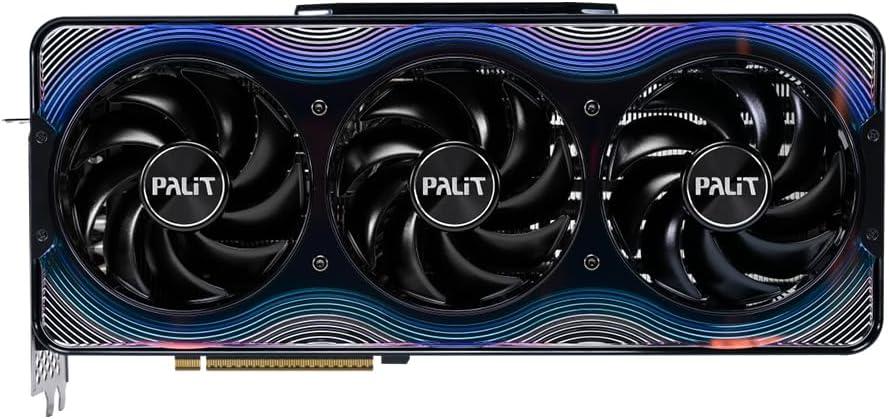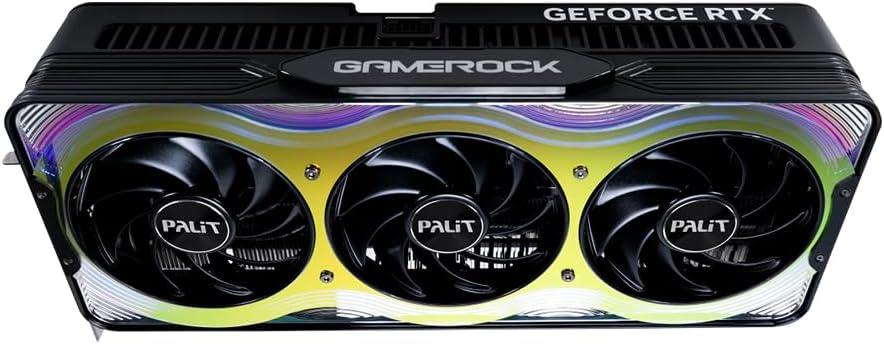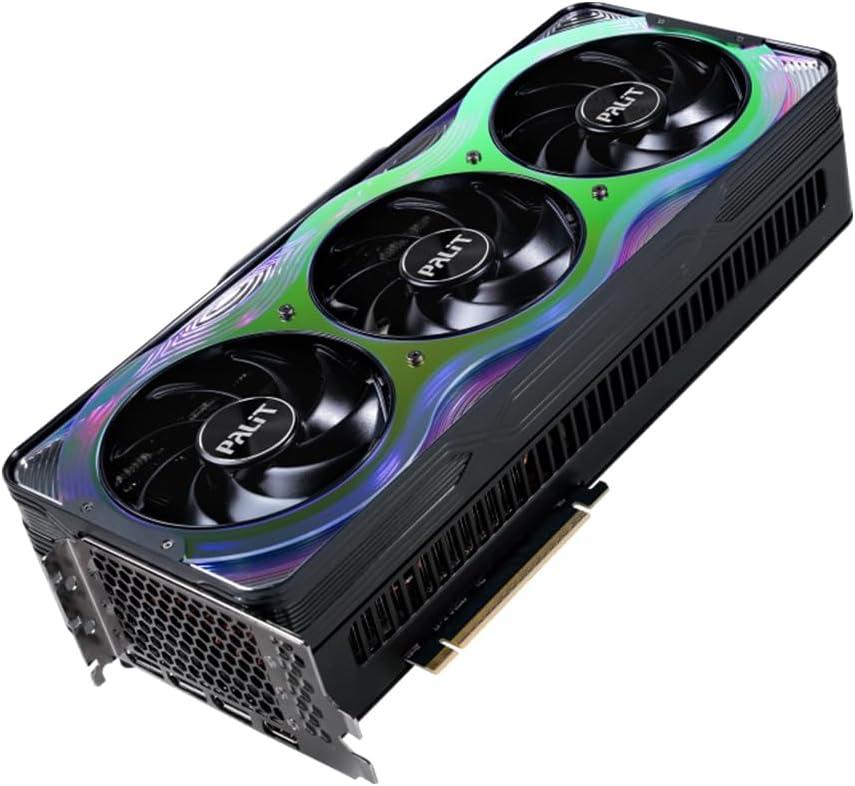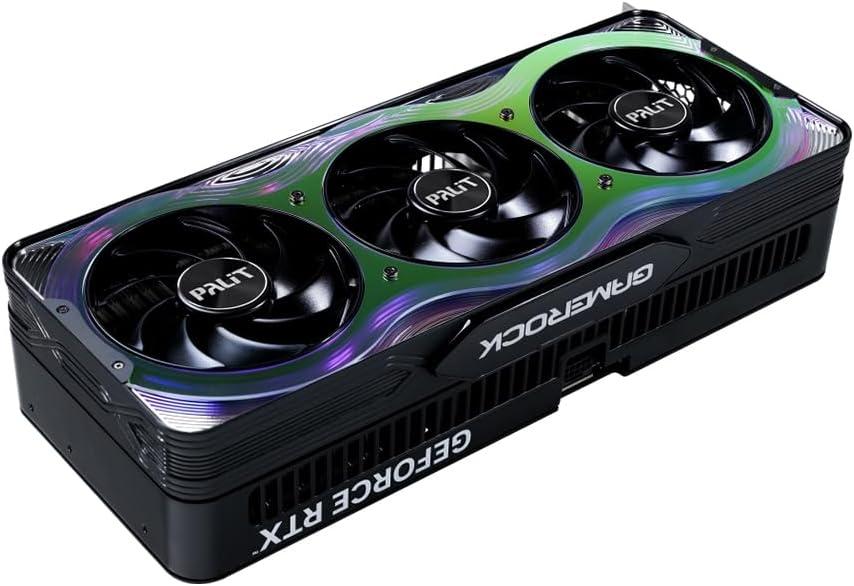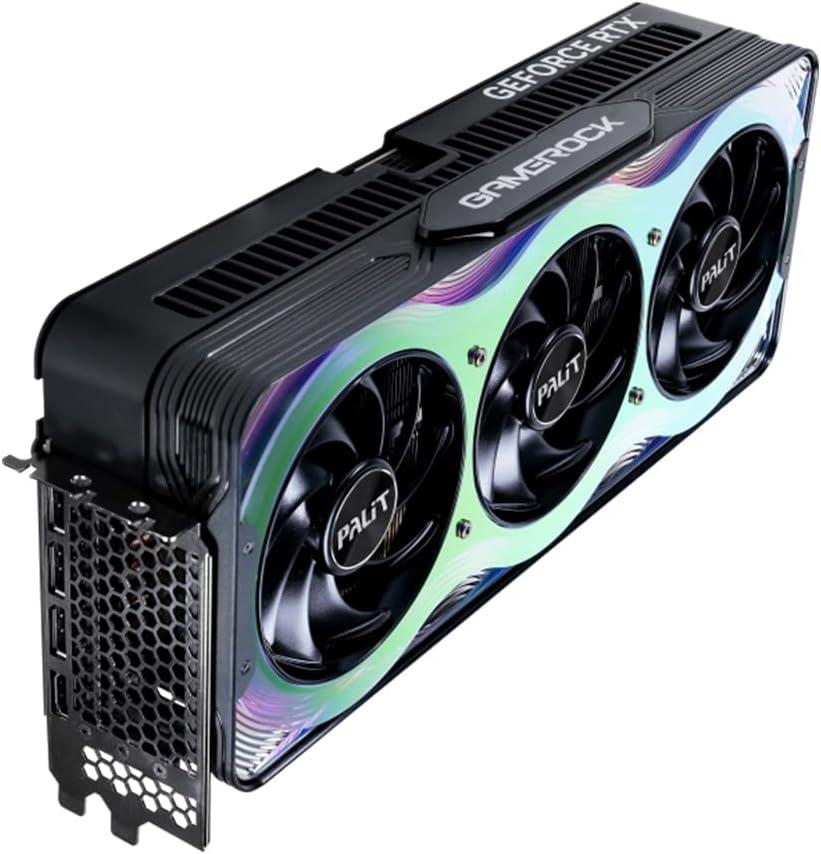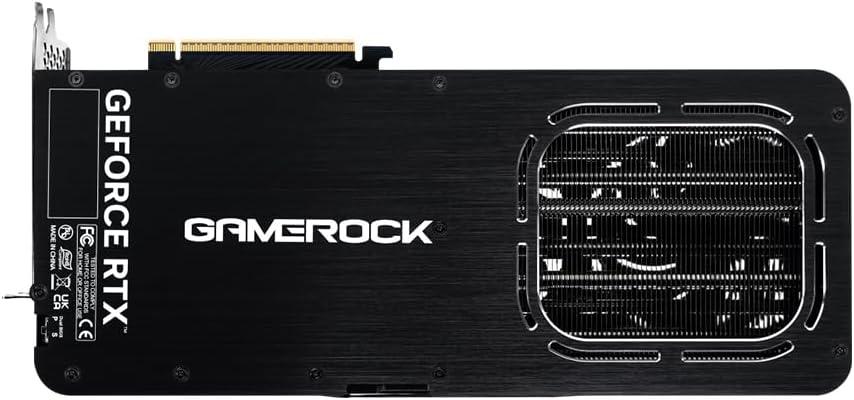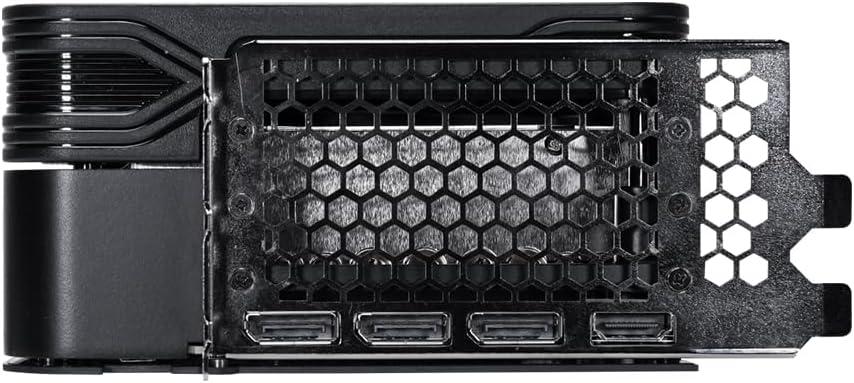Palit GeForce RTX 5070 Ti GameRock
RTX 5070 Ti Review & Specifications
The RTX 5070 Ti is based on the Blackwell 2.0 architecture and manufactured using the 4 nm process node. It was launched approximately 4 months, 1 week ago, originally priced at $749. It features 8960 cores, including 70 compute units (SMs), 280 texture mapping units (TMUs), and 96 render output units (ROPs). For ray tracing and AI-accelerated tasks, it also includes 70 dedicated RT cores and 280 Tensor cores, enabling advanced rendering and upscaling features where supported. It has a base clock of 2295 MHz and a boost clock reaching up to 2452 MHz. The RTX 5070 Ti comes equipped with 16 GB of GDDR7 memory across a 256-bit bus. Memory runs at 1750 MHz and delivers a total memory bandwidth of 896 GB/s.
This GPU has a moderate thermal design power (TDP) of 300 W. A PC case with good airflow and a quality power supply are required for stable operation. Due to the moderate TDP, this GPU is suitable for small form factor builds with somewhat limited airflow.
RTX 5070 Ti Performance
RTX 5070 Ti is a high-end graphics card, achieving a relative gaming performance score of 70.00%. With 16 GB of VRAM, it delivers excellent gaming performance across all resolutions and maintains 60+ FPS at 4K in most modern titles when paired with a high-performance CPU. Ideal for 150+ FPS at 1440p or smooth 4K gaming with ultra settings.
The RTX 5070 Ti is equipped with a generous 16 GB of VRAM, providing excellent performance in a wide range of use cases. It can handle ultra to high settings in most modern games at up to 4K resolution with minimal compromise. It also supports features such as ray tracing and high-resolution textures without significant memory constraints. For content creators, this GPU is well-suited for 4K video editing, photo editing with large RAW files, 3D rendering, and complex animations. In AI applications, it can run intermediate-sized models and perform tasks such as training custom models, image generation, and data processing — though not at the scale of enterprise-class GPUs. It offers a great balance for gamers, creators, and prosumers alike.
Palit GeForce RTX 5070 Ti GameRock has a gaming performance-per-price ratio of 43.2%, suggesting lower value in this category. However, its high raw performance makes it a viable choice for users who prioritize gaming power over budget constraints.
GPU Information
GPU Name: RTX 5070 Ti
GPU Code Name: GB203
Release Price: $749
Launch Date: 4 months, 1 week ago.
Architecture / Process: Blackwell 2.0 / 4 nm
Cores / CUs (SMs) : 8960 / 70
TMUs / ROPs: 280 / 96
RT Cores / Tensor Cores: 70 / 280
Base / Boost Clock: 2295 MHz / 2452 MHz
Memory: 16 GB GDDR7, 256 bit
Memory Clock / Bandwidth: 1750 MHz / 896 GB/s
Transistors: 45600 million
TDP: 300 W
Graphics Card Information
Name: Palit GeForce RTX 5070 Ti GameRock
Manufacturer: Palit
Graphics Card Available: False
Current Price Amazon: $1304❗N/A
Amazon Price Updated: 1 month, 3 weeks ago.
Factory GPU Clock: 2452 MHz
Memory Clock: 28 Gbps effective
Dimensions: 331.9 x 150 x 70.4 mm
Power Connector: 16-pin x 1
Display Output: HDMI 2.1b, DP2.1b x 3
Performance
Pixel Rate: 235.40 GPixel/s
Texture Rate: 686.60 GTexel/s
FP16: 44.35 TFLOPS
FP32: 44.35 TFLOPS
FP64: 686.00 GFLOPS
Gaming Performance
1080p: 70.00%
1440p: 64.02%
2160p: 56.88%
Calculated Performance
Performance per Price: 43.2%
RTX 5070 Ti Compared to Similar Performance GPUs
GPU Price / Performance Table
| GPU (Desc) | Price (Desc) | Gaming_1080p (Desc) | Gaming_1440p (Desc) | Gaming_2160p (Desc) | Game_1440p/Price (Desc) |
|---|---|---|---|---|---|
|
$1795
|
↑
24.7%
|
76.9%
|
72.0%
|
65.1%
|
35.3%
|
|
|
$1799
|
↓
-4.3%
|
74.6%
|
67.1%
|
58.7%
|
32.8%
|
|
|
$1879
|
0.0%
|
73.9%
|
66.8%
|
58.3%
|
31.3%
|
|
|
$1289
|
0.0%
|
72.9%
|
66.1%
|
59.8%
|
45.1%
|
|
|
$839
|
0.0%
|
70.0%
|
64.0%
|
56.9%
|
67.1%
|
|
|
$799
|
0.0%
|
69.2%
|
62.3%
|
54.1%
|
68.6%
|
|
|
$789
|
↓
-17.0%
|
65.7%
|
58.1%
|
50.6%
|
64.7%
|
|
|
$1199
|
0.0%
|
64.6%
|
57.8%
|
48.8%
|
42.4%
|
|
|
$679
|
0.0%
|
63.5%
|
56.5%
|
49.5%
|
73.2%
|
GPU Specification Table
| GPU (Desc) | Architecture | Shader/TMU/ROP/RT | Base/Boost Clock | Memory | Mem Clock/Bandwidth | TDP |
|---|---|---|---|---|---|---|
| RTX 5080 | GB203 / 4 nm / Blackwell 2.0 | 10752 / 336 / 112 / 84 | 2295 MHz / 2617 MHz | 16 GB GDDR7 / 256 bit | 1875 MHz / 960 GB/s | 360 W |
| RTX 4080 SUPER | AD103 / 5 nm / Ada Lovelace | 10240 / 320 / 112 / 80 | 2295 MHz / 2550 MHz | 16 GB GDDR6X / 256 bit | 1438 MHz / 736 GB/s | 320 W |
| RTX 4080 | AD103 / 5 nm / Ada Lovelace | 9728 / 304 / 112 / 76 | 2205 MHz / 2505 MHz | 16 GB GDDR6X / 256 bit | 1400 MHz / 716 GB/s | 320 W |
| RX 7900 XTX | Navi 31 / 5 nm / RDNA 3.0 | 6144 / 384 / 192 / 96 | 1929 MHz / 2498 MHz | 24 GB GDDR6 / 384 bit | 2500 MHz / 960 GB/s | 355 W |
| RTX 5070 Ti | GB203 / 4 nm / Blackwell 2.0 | 8960 / 280 / 96 / 70 | 2295 MHz / 2452 MHz | 16 GB GDDR7 / 256 bit | 1750 MHz / 896 GB/s | 300 W |
| RX 9070 XT | Navi 48 / 5 nm / RDNA 4.0 | 4096 / 256 / 128 / 64 | 1660 MHz / 2970 MHz | 16 GB GDDR6 / 256 bit | 2518 MHz / 644 GB/s | 304 W |
| RX 7900 XT | Navi 31 / 5 nm / RDNA 3.0 | 5376 / 336 / 192 / 84 | 1387 MHz / 2394 MHz | 20 GB GDDR6 / 320 bit | 2500 MHz / 800 GB/s | 300 W |
| RTX 4070 Ti SUPER | AD103 / 5 nm / Ada Lovelace | 8448 / 264 / 96 / 66 | 2340 MHz / 2610 MHz | 16 GB GDDR6X / 256 bit | 1313 MHz / 672 GB/s | 285 W |
| RX 9070 | Navi 48 / 5 nm / RDNA 4.0 | 3584 / 224 / 128 / 56 | 1330 MHz / 2520 MHz | 16 GB GDDR6 / 256 bit | 2518 MHz / 644 GB/s | 220 W |
GPU Table Explanations
GPU (Asc): This refers to the name of the graphics processing unit (GPU).
Price (Asc): This column shows the price of the GPU, sorted in ascending order. The value next to the price indicates the percentage change in price compared to a previous day.
Architecture: This refers to the core architecture of the GPU, including the process node (nm), the underlying architecture name, and any notable features. For example, AD102 / 5 nm / Ada Lovelace tells us that the RTX 4090 uses the AD102 core, built on a 5 nm process node, and based on the Ada Lovelace architecture.
Shader/TMU/ROP/RT: These are performance metrics of the GPU:
- Shader: The number of cores responsible for handling calculations.
- TMU (Texture Mapping Unit): The number of cores involved in texture processing.
- ROP (Raster Operations Pipeline): The number of cores used in the final stages of the rendering process.
- RT (Ray Tracing Cores): The cores dedicated to ray tracing (advanced rendering effects).
Base/Boost Clock: These values indicate the speeds at which the GPU operates:
- Base Clock: The minimum speed at which the GPU runs.
- Boost Clock: The maximum speed the GPU can achieve under load.
Memory: This describes the amount of video memory (VRAM) on the GPU and its type. For example, 24 GB GDDR6X / 384 bit means the RTX 4090 has 24 GB of GDDR6X memory with a 384-bit memory interface.
Mem Clock/Bandwidth: The memory clock refers to the speed of the memory, while bandwidth indicates the amount of data that can be transferred per second. For example, 1313 MHz / 1010 GB/s means the memory clock speed is 1313 MHz and the memory bandwidth is 1010 GB/s.
TDP (Thermal Design Power): This is the maximum amount of power the GPU is expected to consume under full load, measured in watts. It also indicates the cooling solution needed. For example, 450 W means the RTX 4090 has a TDP of 450 watts.

